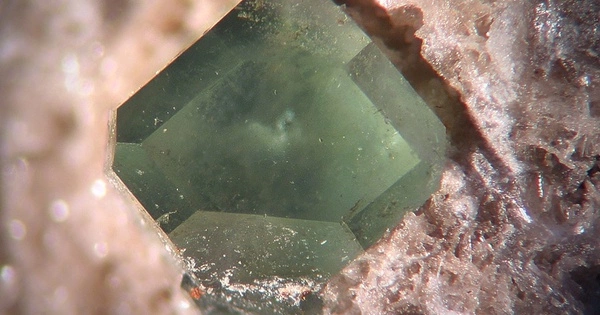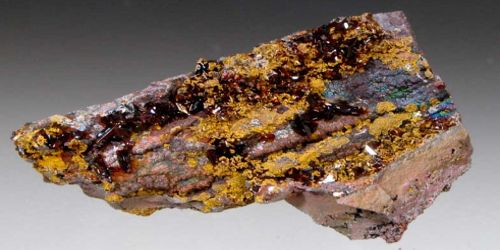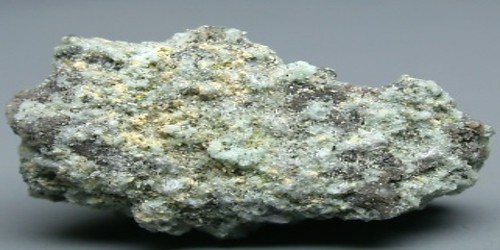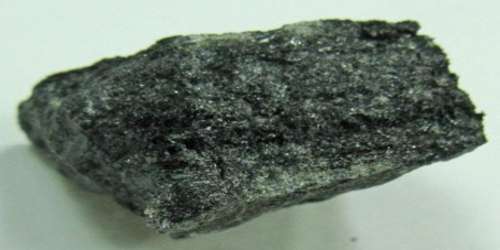Boracite (Mg3B7O13Cl) is a magnesium borate mineral. In the orthorhombic – pyramidal crystal system, it appears as blue-green, colorless, gray, yellow to white crystals. Boracite has pseudo-isometric cubical and octahedral forms as well. These are hypothesized to be the outcome of a shift from an unstable high-temperature isometric shape to a stable low-temperature isometric form during cooling. Penetration twins are common.
Boracite is an evaporite mineral that is found alongside other evaporite minerals such as anhydrite, gypsum, and halite. Its crystals are frequently embedded in these other evaporite minerals, implying that they originated later than the others, particularly given that the crystals are in the high-temperature phase. It is found as well-formed crystals and dispersed grains, which are frequently embedded within gypsum and anhydrite crystals.
The name is derived from its boron content (19 to 20% boron by mass).
General Information
- Category: Tektoborates
- Formula (repeating unit): Mg3B7O13Cl
- Crystal system: Orthorhombic
- Crystal class: Pyramidal (mm2) (same H-M symbol)
- Color: Colorless, white, gray, brown, orange, yellow, pale green, dark green, blue-green, or blue; colorless in transmitted light
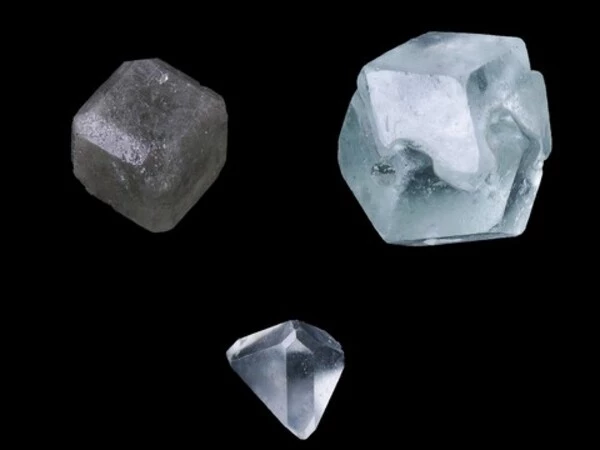
Properties
It has a Mohs hardness of 7 to 7.5 and a specific gravity of 2.9. Refractive index values are nα = 1.658 – 1.662, nβ = 1.662 – 1.667 and nγ = 1.668 – 1.673. It has a conchoidal fracture and does not show cleavage. It is insoluble in water (not to be confused with borax, which is soluble in water).
- Formula mass: 392.03 g/mol
- Crystal habit: Crystalline, disseminated (pseudocubic)
- Twinning: Rarely as penetration twins
- Cleavage: None
- Fracture: Irregular/uneven, conchoidal
- Tenacity: Brittle
- Mohs scale hardness: 7 – 7.5
- Luster: Vitreous – adamantine
- Streak: White
- Diaphaneity: Subtransparent to translucent
- Specific gravity: 2.95
- Density: 2.91 – 3.10
- Optical properties: Biaxial (+)
Occurrences
Boracite is commonly discovered in evaporite sequences alongside gypsum, anhydrite, halite, sylvite, carnallite, kainite, and hilgardite. It was named after the Kalkberg hill in Lüneburg, Lower Saxony, Germany, where it was discovered in 1789. It can also be found in the vicinity of Sussex, New Brunswick.
Boracite, like quartz, has both high and low-temperature phases. The high-temperature phase is cubic and produces nicely shaped cubes and octahedrons, which are frequently changed by other isometric shapes. The only phase that is stable at normal surface temperatures is the low-temperature orthorhombic phase.
